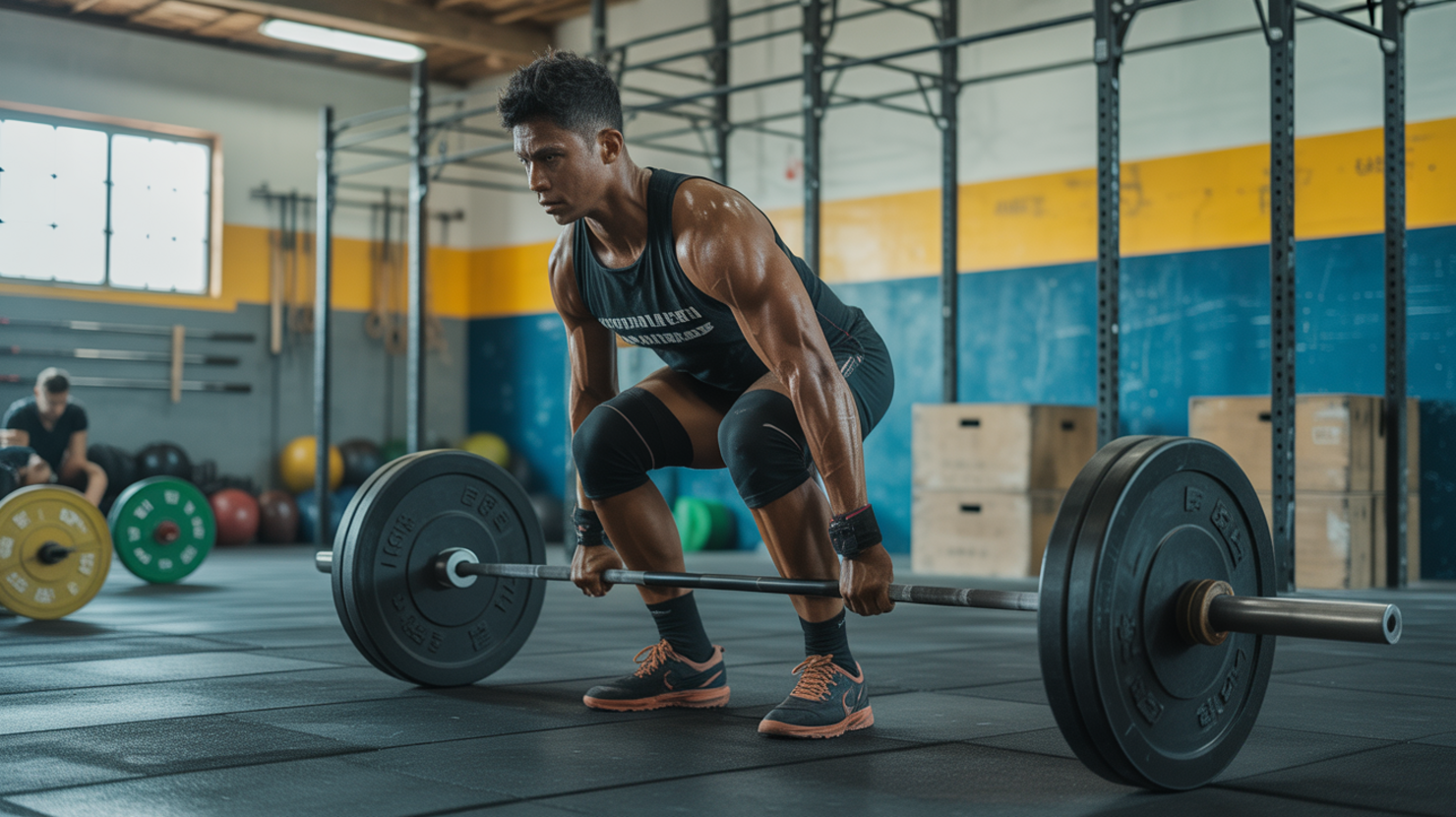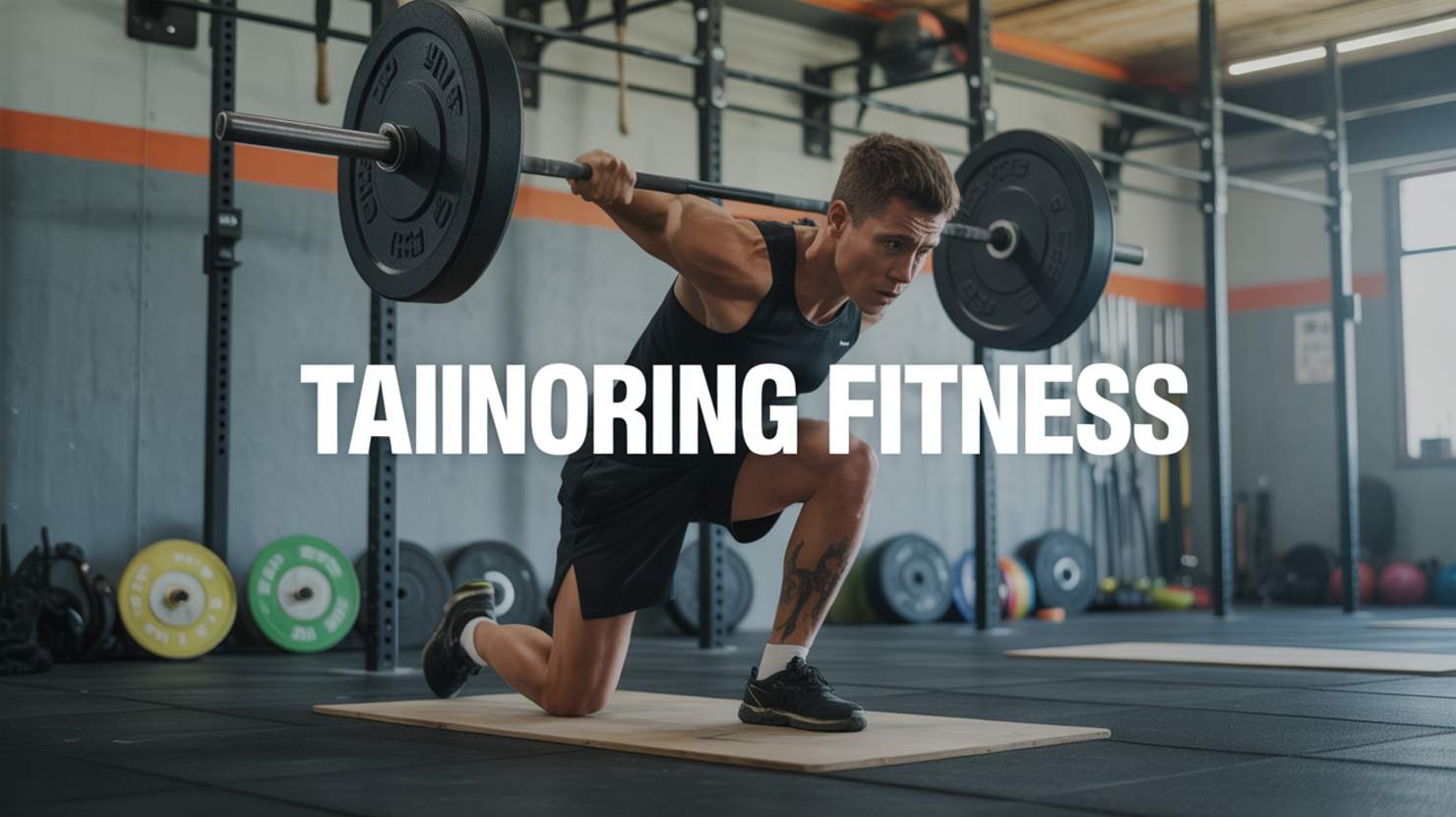Taking your fitness bootcamp into the heart of the city offers incredible energy and atmosphere, but it also introduces a unique set of obstacles. Unlike open fields or dedicated gyms, urban outdoor spaces often come with significant limitations that demand adaptability from coaches and participants alike. Mastering the dynamics of these constrained environments is crucial for delivering effective and safe training sessions.
One of the most immediate hurdles is navigating high noise pollution levels. The constant hum of traffic, blaring horns, construction sounds, and general street bustle can make verbal communication incredibly difficult. This isn’t just an annoyance; it directly impacts the coach’s ability to deliver clear instructions, safety cues, and motivational shouts. Participants may struggle to hear technique pointers or even know when to transition exercises, potentially disrupting the flow and effectiveness of the workout. According to the U.S. Environmental Protection Agency (EPA), urban noise can exceed healthy levels, impacting concentration and well-being – a factor coaches must actively counter.
Furthermore, managing spatial constraints during dynamic drills is a constant puzzle. City parks, squares, or sidewalks are rarely designed for sprawling, high-intensity movements. Exercises requiring significant lateral travel, broad jumps, burpees with wide stances, or fast shuffles become challenging to execute safely without the risk of collision. Coaches must be highly strategic in positioning participants, selecting exercises that fit the available footprint, and providing cues that emphasize control within limited boundaries. This requires meticulous planning and the ability to modify on the fly.
Finally, addressing environmental distractions effectively is vital for maintaining participant focus. The urban landscape is a vibrant tapestry of sights, sounds, and activities – from interesting architecture and window displays to street performers and curious onlookers. These elements, while part of the city’s charm, can easily pull attention away from the workout, leading to decreased intensity or missed instructions. Coaches need strategies to keep participants engaged and centered on the task at hand, minimizing the impact of the bustling world around them. Overcoming these specific challenges is key to running a successful and impactful urban bootcamp.
Safety Protocols for Tight Group Configurations
Operating a bootcamp in a busy urban environment presents unique challenges, especially when space is limited and groups are tightly configured. Ensuring the safety of every participant must be the absolute top priority. Without stringent safety protocols, the risk of collisions, trips, and other accidents increases significantly. Effective leadership in this setting means not just delivering a great workout, but creating a secure training zone amidst the urban hustle.
A fundamental protocol involves establishing and communicating proximity awareness boundaries. Participants need clear guidelines on how much personal space is required for each movement, especially during dynamic exercises. Coaches must constantly scan the group, using verbal cues and visual signals to help individuals maintain safe distances from each other and any potential obstacles. Defining these invisible ‘safety bubbles’ prevents unintentional contact and allows for fluid movement within the confined area.
Equally critical is the implementation of emergency exit protocols. In a crowded urban space, having a predetermined plan for rapid, safe egress is vital in case of an unexpected event, such as sudden pedestrian surges, environmental hazards, or participant medical emergencies. Leaders must identify potential escape routes before the session begins and communicate these clearly to the group. Practicing a quick ‘hold’ or ‘clear zone’ command can also buy valuable time in unfolding situations.
Finally, securing equipment in pedestrian-heavy zones cannot be overstated. Loose dumbbells, resistance bands, or mats can become dangerous trip hazards for both participants and unsuspecting passersby. Develop a system for managing gear – ensuring it’s stored securely when not in use, placed well out of any potential foot traffic lanes, and accounted for throughout the session. Adhering to best practices for fitness professional safety, such as those outlined by organizations like the American Council on Exercise (ACE), provides a strong foundation for managing these risks effectively in challenging urban environments. Prioritizing these protocols safeguards participants and upholds the program’s reputation.
Voice Projection Techniques Over City Noise
Leading a fitness bootcamp in a bustling urban environment presents unique auditory challenges. The constant hum of traffic, sirens, construction, and chatter can easily drown out your voice, making it difficult to deliver instructions clearly and maintain control. Mastering effective voice projection isn’t just about volume; it’s a critical leadership skill for safety, communication, and group cohesion in these challenging settings.
One foundational technique is mastering diaphragmatic breathing. Unlike shallow chest breathing, which limits air supply, breathing from your diaphragm allows you to access more power from your core. This provides a stronger, more sustained airflow to support your voice, enabling you to project with greater volume and resonance without straining your vocal cords. Practicing proper breathing techniques can significantly improve your ability to be heard clearly above city noise. Learn more about diaphragmatic breathing.
Beyond just voice, incorporating whistle cadences for attention shifts is incredibly effective. A well-timed whistle can cut through noise far more effectively than shouting. Develop a few distinct, simple whistle signals: perhaps one sharp blast for “stop/attention,” two quick blasts for “transition,” or a specific pattern for “gather round.” These auditory cues become instantly recognizable and can signal crucial shifts or immediate needs, allowing you to save your voice while maintaining command.
Finally, leverage directional cueing strategies. How you position yourself and where you face when speaking makes a huge difference. Don’t just stand still; move around the group. Face the direction you want participants to move or the specific individuals you need to address. Use hand signals in conjunction with verbal cues, especially when noise is peak. Making eye contact and ensuring participants are looking at you as you give instructions helps reinforce the message even if some words are lost to the environment. Combining these techniques ensures your coaching cues are received, understood, and acted upon, keeping your urban bootcamp running smoothly and safely.
Exercise Modifications for Compact Layouts
Operating bootcamp sessions in crowded urban environments often means navigating compact layouts and limited open space. Standard exercise protocols designed for expansive fields can quickly become challenging, if not hazardous. Smart coaching involves adapting movements and structures to ensure participants get an effective workout safely within tight confines.
One key modification is substituting lateral moves with vertical drills. Exercises like side shuffles, lateral lunges, or bounding leaps require clear, open lanes that are rarely available. Instead, focus on movements that primarily utilize vertical space. Think squat variations, lunge variations (stationary or reverse), high knees, burpees (without the broad jump), jumping jacks, or box jumps if using benches or steps. These movements keep participants mostly in their individual footprint or require minimal linear travel, drastically reducing the risk of collision.
Beyond individual movements, the overall flow needs adjustment. Creating fluid circuit rotation systems is crucial. Traditional circuits might involve running between stations, but in tight spaces, this isn’t feasible. Design stations that are close together, perhaps in a small circle or square. Implement clear, controlled transitions, possibly having one small group move at a time, or using designated paths. Emphasize walking or controlled steps between stations rather than running. The goal is smooth transitions that prevent bottlenecks or accidental contact.
Finally, mastering the design of micro-space bodyweight alternatives is essential. Many powerful bodyweight exercises rely on covering distance or requiring significant sprawl. Coaches must have an arsenal of effective variations that require minimal floor space. Consider exercises like plank variations, mountain climbers (executed in a controlled manner), push-ups, sit-ups, crunches, triceps dips (using a bench or step), and various isometric holds (wall sits, plank holds, static lunges). These alternatives ensure intensity and engagement even when movement is restricted to a very small area. Adapting exercises for compact layouts isn’t a compromise; it’s a necessary skill for leading successful urban outdoor bootcamps.
Maintaining Engagement Amid Distractions
Leading an outdoor bootcamp in a bustling urban setting presents unique challenges, not least of which is keeping participants focused and engaged when surrounded by endless distractions. From passing pedestrians and traffic noise to street performers and vibrant city life, the environment constantly vies for your group’s attention. As a leader, your ability to create a high-energy, absorbing workout experience is paramount to success and participant retention. You need strategies that actively pull attention back to the task and keep energy levels high.
One highly effective tactic is implementing rapid-fire partner challenges. These short, intense bursts of activity require participants to work closely together, focusing entirely on their partner and the immediate task. Think quick reps of push-up high-fives, partner resistance sprints, synchronized bodyweight movements, or back-to-back core work. The rapid pace, the need for coordination, and the reliance on a partner leave little room for minds to wander, fostering intense focus, friendly competition, and essential camaraderie within the group. These dynamic duos keep participants locked in and accountable to each other.
Leveraging the urban environment itself can also transform potential distractions into dynamic workout elements. Get creative by using urban landmarks as workout props. A sturdy park bench becomes a versatile step-up station or a plyometric box for jumps. A stable wall is perfect for challenging wall sits or incline push-ups. Sets of stairs provide excellent opportunities for cardio bursts and leg work. Even the natural geometry of a plaza or public square can dictate agility drills and movement patterns. This not only makes the workout novel and exciting but also helps participants see their familiar surroundings in a new, active light, integrating the environment positively rather than letting it detract from the session.
Finally, employing gamified interval timers adds a layer of fun and urgency that powerfully combats mental fatigue and distraction. Instead of standard monotonous beeps, use apps or audible cues that incorporate fun sounds, engaging count-downs, or even simple score-keeping elements for rounds or reps. Structure intervals as “challenges” or “rounds,” perhaps even pitting small groups against each other to complete a specific number of reps within the time limit or see who can do the most before the buzzer. This approach transforms the workout into a series of achievable mini-games, making participants eager to beat the clock or outperform their previous effort, effectively locking their attention onto the task at hand and boosting motivation. Services like Interval Timer apps can offer customization options for sounds and visuals to keep things fresh.
By strategically using interactive partner work, integrating the environment creatively as part of the workout, and adding a touch of gamification and fun to your timing methods, you can build a workout experience so compelling and absorbing that the urban buzz becomes mere background noise. This approach ensures high engagement and maximum effort from start to finish, keeping your bootcamp members focused, energized, and motivated in even the most crowded urban settings.
Building Group Cohesion in Transient Settings
Leading bootcamp sessions in bustling urban environments often means working with a dynamic group where participants might change frequently, or the setting itself is temporary. Building a strong sense of community and connection, known as group cohesion, in such transient conditions presents unique challenges. Yet, it’s crucial for fostering motivation, support, and a positive workout experience that keeps people coming back.
Cultivating this sense of belonging requires intentional effort, focusing on quick, impactful ways for participants to connect with each other. Here are key strategies to help your group bond, even amidst the urban hustle:
- Developing Quick Name-Recognition Techniques: Nothing makes someone feel more seen and valued than being called by their name. In a transient setting, mastering quick name recognition is paramount. Start with simple introductions at the beginning, encourage partners to share names, and make a conscious effort to use names during coaching cues and positive reinforcement. This small act significantly boosts individual inclusion and starts building rapport instantly.
- Creating Instant Team Alliances: Break down potential social barriers by quickly forming small teams or partner pairings for specific drills or challenges. Assign partners for exercises that require mutual support (like assisted squats or partner planks) or group individuals for relay races or team-based circuits. These “instant alliances” encourage immediate interaction, shared effort, and mutual encouragement, fostering camaraderie from the get-go.
- Using Social Accountability Check-ins: Encourage participants to briefly check in with their partner or small group members about their effort, form, or just a quick word of encouragement during short breaks or transitions. This isn’t about lengthy discussions but rather quick, focused interactions that build a sense of shared journey and mutual support. It reinforces that they are part of a collective working towards fitness goals together.
By implementing these focused techniques, you can effectively cultivate a supportive and cohesive group dynamic, transforming a transient urban workout space into a place where participants feel connected, motivated, and part of a thriving fitness community.
Adapting to Unpredictable Urban Conditions
Leading outdoor fitness sessions in bustling urban environments means embracing the unexpected. Unlike a controlled gym setting, you’re constantly navigating a dynamic landscape where conditions can change in an instant. Mastering the art of adaptability is paramount to ensuring sessions remain safe, effective, and engaging for your participants, no matter what the city throws your way. This requires proactive planning and quick thinking on your feet.
One of the most common urban variables is the weather. Sunny skies can turn into sudden downpours, or temperatures can fluctuate significantly throughout the day. Always have a weather-contingent plan B ready. This might involve identifying nearby sheltered areas like park structures, underpasses, or even planning a specific workout routine that can be performed effectively in a smaller, covered space if needed. Checking reliable weather forecasts just before the session is a non-negotiable step in your preparation routine.
Another crucial factor to consider is air quality, especially in dense urban areas. High pollution levels, often reported via the Air Quality Index (AQI), can significantly impact exercise performance and respiratory health. It’s vital to monitor local AQI reports using resources like the official AirNow website or similar regional tools. If the AQI is high, be prepared to adjust the workout intensity, duration, or exercise selection to reduce participants’ exposure to pollutants during strenuous activity. Prioritizing health means being flexible with your planned session outline.
Perhaps the most immediate and frequent challenge is sudden pedestrian interference. Parks and public spaces are shared resources, and unexpected obstacles—be it a jogger, a dog walker, children playing, or even a sudden event setting up—can disrupt your flow. Develop sharp situational awareness and train your participants to maintain focus within their immediate personal space. Practice giving clear, concise verbal cues to quickly guide the group or individuals around sudden obstructions. Your ability to safely and seamlessly manage these disruptions ensures session momentum and prevents potential accidents. Being prepared for these variables is the hallmark of effective urban bootcamp leadership.
Next-Gen Urban Fitness Leadership Strategies
Leading bootcamps in dynamic urban environments presents unique challenges, but also exciting opportunities for innovation. As city landscapes evolve and technology advances, so too must our approach to fitness leadership. The future of urban bootcamp coaching involves embracing new tools, adapting formats, and actively engaging with the urban fabric itself to create more effective, resilient, and integrated training experiences.
One significant frontier is the integration of wearable technology. Devices like smartwatches and fitness trackers offer valuable real-time feedback, not just for participants monitoring their own progress, but for leaders observing group dynamics. This data can inform on-the-fly adjustments to intensity based on collective effort or recovery needs, enhancing both performance and safety. Leveraging these tools allows for data-driven coaching even in the most unpredictable outdoor settings. Consider exploring platforms or devices mentioned on reputable tech review sites or fitness technology publications.
Another key strategy is developing hybrid outdoor-indoor formats. Recognizing that urban weather can be unpredictable and public spaces sometimes inaccessible, having access to a nearby indoor space (like a studio, community room, or even a covered structure) provides crucial flexibility. This allows for seamless transitions during sessions, ensuring continuity and comfort regardless of conditions. A hybrid model also opens up possibilities for incorporating equipment or exercises better suited to an indoor environment, complementing the outdoor experience.
Looking further ahead, partnering with urban planners for optimized spaces represents a bold step. Imagine collaborating with city officials or urban design teams to advocate for designated fitness zones in parks, plazas, or underutilized public areas. This could involve advising on layout, surface materials, or even the placement of fixed equipment suitable for group training. Engaging with local government or community development initiatives can help shape the future of public fitness spaces, making urban bootcamps a more integral and planned element of city life. Resources like the NYC Parks Department planning resources or similar city planning sites can offer insights into local processes.
By embracing these next-gen strategies – from tech integration and format flexibility to proactive engagement with urban development – bootcamp leaders can not only overcome current urban challenges but also shape a more dynamic, effective, and sustainable future for outdoor fitness in the city. This forward-thinking approach ensures your coaching remains relevant and impactful in the evolving urban landscape.












